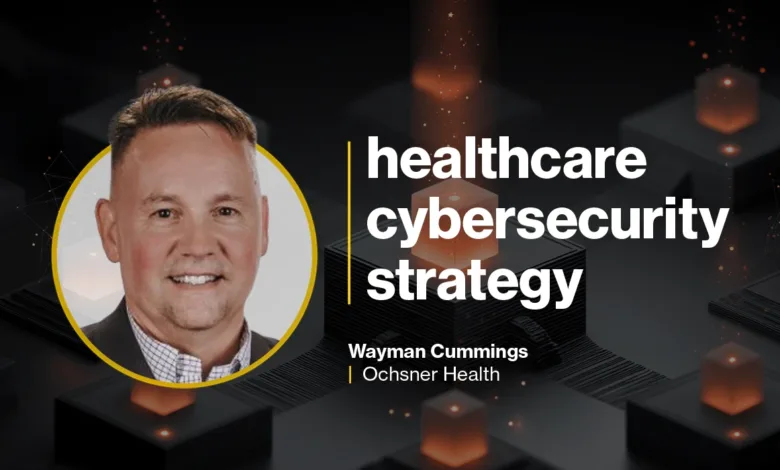Crafting an Effective Healthcare Cybersecurity Strategy

▼ Summary
– Foundational cybersecurity controls like vulnerability management and network segmentation offer high impact for healthcare organizations with limited resources.
– Healthcare organizations should prioritize investments in user-centric security controls and data micro-segmentation to protect people and data while improving operational efficiency.
– Healthcare providers should require vendors to maintain current systems and conduct API audits to improve supply chain security through shared governance responsibilities.
– A mature incident response plan must prioritize continuity of care through four stages: detection, containment, mitigation, and restoration, tested regularly via tabletop exercises.
– Healthcare leaders should anticipate more prescriptive regulations including enhanced HIPAA enforcement, AI governance frameworks, and potential cybersecurity legislation mandating stronger controls.
Building a resilient healthcare cybersecurity program demands a strategic focus on foundational controls that deliver maximum protection, even when financial and staffing resources are limited. According to a leading industry CISO, concentrating efforts on a few critical areas can dramatically improve an organization’s security posture and patient trust.
When developing a cybersecurity strategy with limited resources, where should healthcare leaders begin?
Executives are advised to ground their security plans in core controls that provide a high return on investment. Two of the most impactful pillars are vulnerability management and network segmentation. These foundational elements offer substantial risk reduction without requiring a massive budget.
For vulnerability management, the priority should be on promptly patching systems with known security flaws. Concentrating on assets that can be remediated quickly shrinks the organization’s overall attack surface. Regarding network segmentation, the primary objective is to control and restrict lateral movement inside the network. This practice effectively contains any security incident, limiting its potential damage and bolstering the system’s overall resilience.
Furthermore, fostering a widespread culture of cybersecurity awareness is absolutely vital. In many ways, a well-trained workforce represents one of the most powerful and cost-effective security controls available. Targeted education and training empower staff members to identify and report potential threats, turning them into a formidable first line of defense.
How should healthcare organizations approach the allocation of their security investments across people, processes, and technology?
The guiding principle should be aligning all cybersecurity spending with the protection of the organization’s most critical assets: its people and its data. Security leaders carry the responsibility of safeguarding both the workforce and the patient community. Investing in user-friendly security measures like multi-factor authentication (MFA), passwordless access, and anti-phishing tools not only reduces risk but can also enhance operational efficiency by simplifying secure access.
In data management, a strategic evolution from basic network segmentation to micro-segmentation is highly recommended. This more granular approach isolates individual workloads and applications, ensuring that a compromise in one area is effectively contained, thereby minimizing the overall impact.
How can healthcare providers achieve better visibility into their supply chain’s security without overwhelming their internal teams?
Healthcare organizations must insist that their vendors assume a more active role in cybersecurity. This involves requiring partners to maintain current patch levels on their systems and to develop plans for migrating away from legacy operating systems, which are still common in healthcare settings.
For API integrations, the exchange of data should be limited to only what is absolutely essential. This practice reduces potential exposure points and simplifies compliance efforts. Conducting a thorough API audit is a practical step to verify that data sharing is minimized. Establishing clear expectations for data governance processes is also crucial. A collaborative approach to governance fosters the transparency and accountability needed across all vendor relationships, effectively shifting some of the security burden to a shared responsibility model.
What are the essential components of a well-prepared incident response plan for a healthcare provider, particularly when patient safety is the top priority? How can these plans be tested effectively?
A mature incident response plan must prioritize the continuity of patient care and enable rapid system recovery. A comprehensive plan is built around four key phases: detection, containment, mitigation, and restoration.
The process begins with the swift identification of anomalies or a confirmed breach. Once detected, the immediate focus shifts to containment, which involves isolating the affected systems to prevent the threat from spreading. This step underscores the critical importance of having robust network and micro-segmentation strategies in place. After containment, efforts move to mitigation, taking decisive action to neutralize any lingering threats. The final phase, restoration, is the coordinated recovery of systems that are essential for patient safety and clinical operations.
To ensure effectiveness, incident response plans require regular testing and refinement. Conducting tabletop exercises and simulation drills allows teams to practice their response to various scenarios in a controlled environment, much like clinical or military emergency drills, without disrupting daily hospital operations.
What regulatory changes should the healthcare sector anticipate in the coming years, particularly concerning data privacy and artificial intelligence?
Healthcare leaders should prepare for a regulatory environment that becomes both more prescriptive and expansive. We can anticipate stricter enforcement of existing laws like HIPAA, accompanied by tighter compliance mandates and increased oversight. A wave of new regulations specifically targeting artificial intelligence is also on the horizon. These emerging frameworks will likely address the ethical application of AI, establish stronger data privacy rules, and demand transparency in algorithms, especially for tools used in clinical decision support and diagnostics.
The potential Cybersecurity Act of 2025 is also being closely monitored. If passed, this legislation would mandate stronger cybersecurity controls across the healthcare industry. Additionally, sector-specific guidance from organizations like the National Institute of Standards and Technology (NIST) is expected, reflecting the sector’s high-risk profile and unique operational demands. Proactively engaging with these evolving standards will be fundamental to maintaining both regulatory compliance and the trust of patients and partners.
(Source: HelpNet Security)





